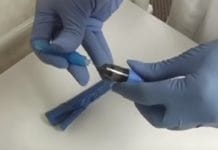As knowledge of the oral-systemic connections has become widely understood and accepted, the next step is to lift that science off the page and integrate that knowledge into practical clinical protocols. Mainstream media and internet sources are brimming with information about the connections between the mouth and the body.
As the general public becomes more aware of these links, they will expect their dental professionals to be knowledgeable as well. Dentistry is growing as a medical specialty. If you’re not elevating your professional identity and expanding your practice, you’re going to miss an enormous opportunity.
As our understanding of the multiple oral-systemic links has increased, our roles must expand to include awareness of and focus on our patients’ whole health. According to data from the Centers for Disease Control and Prevention, 64.9% of the United States population visit a dental practice at least once a year.1 This is significantly more often than people visit their physician.2 For this reason, we have an added responsibility to recognize our critical role in recognizing systemic health risk in our patients in addition to our traditional focus on oral health risks.
Expanding Dentistry’s Medical Model
In addition to an obligation to be cognizant of systemic health risks, we have an opportunity to expand our roles as healthcare practitioners by adopting a medical model of care. In the classic medical model, symptoms are gathered, differential diagnoses are considered, testing is done to determine the cause of the illness, and treatment is prescribed based on those findings.
The traditional dental model of care is more focused on repairing the problems our patients have than on delving deeper to discover why those problems are occurring in the first place. For example, when our patient has dental caries that have breached the enamel and are into the dentin below, we clean out and fill that cavity. Or, when caries is extensive, we clean out the decay, build up the tooth, and then cover it with a crown. At times, dentistry seems more like engineering than medicine.
Few practitioners take the time to determine the root cause of caries. Does the patient have a high carbohydrate diet? Is the patient’s mouth acidic? Does the patient have adequate saliva? Does the patient have a restricted airway? Is the patient’s self-care so poor that the oral microbiome is laden with streptococcus mutans or lactobacilli or other caries-causing bacteria? Is there a genetic susceptibility to decay? Does the patient have underlying medical conditions that may be contributing to the caries risk?
These questions and more should be considered in addition to the determination of which restoration is needed.
Expanding Dental Hygiene’s Medical Model
What about the traditional dental hygiene model of care? We complete a periodontal assessment (ideally at every appointment), and when we see bleeding and pocketing, we perform non-surgical periodontal therapy, which is a tremendous service to our patients.
But is it possible that our treatment could be even more effective? And are we delving deeper? Do we stop to wonder why the patient has deteriorating periodontal health? Or do we simply blame the patient’s inadequate self-care?
There may be systemic considerations that we should recognize. Does the patient have virulent pathogens in the oral microbiome? Is there a genetic component we should be aware of? Does the patient have a restricted airway? Is the pH of the mouth low? Is the patient immunocompromised or immunosuppressed? Does the patient have an underlying systemic illness that could be contributing to the oral disease? Does the patient have lifestyle habits that promote oral inflammation?
Adopting medical strategies will expand your ability to more fully care for your patients’ whole health. Those strategies include delving into the health history (including family history and genetics), searching for the root cause, performing risk assessment, employing laboratory testing, and utilizing wound care protocols.
One simple first step to implement is to delve more deeply into your patients’ health history, including family history and genetics. Does your patient have a personal or family history of cardiovascular disease? Does this patient also have bleeding gingiva with attachment loss? When you discuss the need for periodontal therapy with this patient, it would be prudent to inform the patient that certain periodontal pathogens have been found to be causal for cardiovascular disease, noted by Bale, Doneen, and Vigarust.3 It may be beneficial to utilize a laboratory bacterial DNA test to identify if those bacteria are present in the oral microbiome. Once identified, treatment can be targeted to those particular bacteria. Additionally, Bale and Doneen have stated that non-surgical periodontal therapy is comparable in beneficial effect to a 30% drop in LDL cholesterol.4 Explaining that benefit to your patient might help convince the patient to accept treatment.
Another way to implement a medical strategy is to search for the root cause of your patient’s condition. For example, while performing the oral and oropharyngeal cancer screening, if you notice clusters of Fordyce granules, would you consider that they might be significant? When I was in dental hygiene school, we were taught that Fordyce granules were simply structures that we may notice in some patient’s mouths. However, we now know that Fordyce granules are a sign of hyperlipidemia, or elevated lipids.5 This means that a conversation about an elevated risk for cardiovascular disease is in order. That risk is heightened if the patient also has gingival inflammation. When we look for the root cause of our patient’s oral signs and link them to their systemic health risks, and then offer treatment that may reduce that risk, we extend our ability to have an impact on our patient’s overall health. This is one way we can save lives in the dental practice.
A movement is growing among individual practitioners, as well as professional organizations, for a revolution in health care. Collaboration between medical practitioners, dental hygienists, and dentists is critical, and the time has come to incorporate the systemic health needs of the dental patient into every dental care appointment. It’s time to lift the science off the page and integrate it into our everyday clinical care protocols.
Now Listen to the Today’s RDH Dental Hygiene Podcast Below:
References
- Oral and Dental Health. (2020, November 10). Centers for Disease Control and Prevention: National Center for Health Statistics. Retrieved from https://www.cdc.gov/nchs/fastats/dental.htm
- Michas, F. (2018, September 26). Frequency of U.S. Adults Who Visited or Consulted a Primary Care Physician as of 2018. Statista. Retrieved from https://www.statista.com/statistics/916781/primary-care-physician-visit-frequency-among-adults-us/
- Bale, B., Doneen, A., Vigarust, D. (2016, November 5). High Risk Periodontal Pathogens Contribute to the Pathogenesis of Atherosclerosis. Postgraduate Medical Journal. Retrieved from https://baledoneen.com/blog/landmark-bale-doneen-study-discovers-new-treatable-cause-of-heart-disease/
- Kapellas, K., et al. (2014, June 23). Effect of Periodontal Therapy on Arterial Structure and Function Among Aboriginal Australians. Hypertension. 64:702–708. Retrieved from https://www.ahajournals.org/doi/10.1161/HYPERTENSIONAHA.114.03359
- Gaballah K.Y., Rahimi, I. Can presence of oral Fordyce’s granules serve as a marker for hyperlipidemia? Dent Res J (Isfahan). 2014 Sep; 11(5): 553-8. PMID: 25426145; PMCID: PMC4241607. Retrieved from https://pubmed.ncbi.nlm.nih.gov/25426145/











